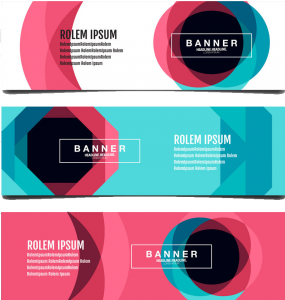You’ve built an eCommerce site, uploaded your product images, crafted those catchy product descriptions, and maybe even run a few promos but the sales? They’re trickling in slower than you hoped. Sound familiar?
Here’s the thing: running an online store isn’t just about having great products. It’s about getting those products in front of the right people at the right time and that’s exactly where pay-per-click ads for eCommerce websites come in.
PPC (short for pay-per-click) advertising is a favorite weapon in the digital marketing arsenal for good reason. It’s data-driven, scalable, and gets results fast. Whether you’re a small boutique brand or managing a massive online catalogue, pay-per-click ads for eCommerce websites let you target high-intent buyers who are already searching for what you sell.
In this guide, we’ll break down exactly what PPC is, how it works for online stores like yours, and why it could be the smartest move you make to grow your business this year. Let’s get into it.
Table of Contents
ToggleSo, What Exactly Is eCommerce Advertising?

You’ve spent months building your online store, curating your products, polishing your branding—only to realize that people aren’t just going to stumble upon your website by chance. That’s where eCommerce advertising steps in to bridge the gap between your store and the people who need what you’re selling.
At its core, eCommerce advertising is all about promoting your online store using paid placements—both online and offline. But in today’s digital-first world, most of the action happens online, especially on platforms like search engines, social media feeds, and popular websites your audience already visits.
A major part of this strategy? Pay-per-click ads for eCommerce websites. These are the clickable ads you see at the top of a Google search or tucked into your Instagram feed. You only pay when someone clicks—making it one of the most budget-friendly and results-driven ways to advertise. Whether you’re trying to boost traffic, promote a product launch, or just get noticed in a competitive space, pay-per-click ads for eCommerce websites give you that extra push to reach the right shoppers at the right moment.
What is PPC for eCommerce?
Imagine someone searching for the exact product you sell—let’s say a stylish leather backpack. Now, instead of them scrolling endlessly through search results, your store pops up right at the top. That’s the magic of PPC for eCommerce.
Pay-per-click ads for eCommerce websites are a form of online advertising where you only pay when someone actually clicks your ad. It’s a targeted, cost-effective way to drive potential customers straight to your product pages. These ads can appear on Google search results, Facebook and Instagram feeds, or even relevant blogs and websites.
Whether you’re a new store trying to make your first sale or an established brand looking to scale, pay-per-click ads for eCommerce websites give you control, visibility, and data-backed performance—all wrapped into one smart strategy.
What is PPC Advertising? (And Why eCommerce Stores Can’t Ignore It)

Ever wonder how that perfect product seems to appear right when you’re searching on Google or scrolling through Facebook? That’s not a coincidence—it’s the result of a smart strategy called pay-per-click (PPC) advertising.
With pay-per-click ads for eCommerce websites, you only pay when someone actually clicks your ad. It doesn’t matter how many eyeballs see it—you’re only charged for actual interest, making it one of the most budget-friendly ways to reach shoppers who are actively looking for what you sell.
Platforms like Google and Facebook dominate the PPC scene, offering massive reach. Whether it’s a Google Shopping ad showing off your best-selling product or a Facebook carousel targeting mobile buyers, pay-per-click ads for eCommerce websites give you precision, flexibility, and real-time performance data to fine-tune your results.
It’s advertising that actually works for your budget—and your business goals.
How Does PPC for eCommerce Work?

#1. Ad Creation
Imagine this, you just launched a new product, and within hours, real customers are clicking on your ad and visiting your store. That’s the magic of pay-per-click ads for eCommerce websites—they deliver fast, targeted traffic right when you need it most.
Getting started with PPC for eCommerce isn’t rocket science. It’s actually pretty straightforward. The first step is ad creation, and the good news? It’s easier than you might think. Most pay-per-click ads for eCommerce websites are compact and streamlined—just a compelling headline, a few lines of copy, and sometimes an image.
If you’re using platforms like Google Ads, it gets even simpler. You won’t need fancy graphics—just a solid landing page link, a sharp headline, and two punchy lines of copy to pull people in. The goal is to match what users are searching for and make them feel like your product is exactly what they need.
And when that ad goes live? You’re only paying when someone clicks, not just when they scroll past. That’s targeted advertising with zero fluff—focused, efficient, and built for results.
#2. Keyword Selection
Target the shoppers that are already shopping. Picture someone typing “best tent for the winter” into Google at midnight, credit card in hand, ready to buy. With pay-per-click ads for eCommerce websites, your store can be the first thing they see—and that’s the power of smart keyword selection.
In platforms like Google Ads, you don’t just toss your ad into the digital void and hope it sticks. You choose exactly which keywords will trigger your ad to appear. Selling camping gear? You might target phrases like “lightweight hiking backpack,” “winter-ready tent,” or “best warm weather sleeping bag.” That way, your pay-per-click ads for eCommerce websites are only shown to people already looking for what you’re selling.
It’s not about casting a wide net—it’s about putting your product in front of high-intent buyers at the perfect moment. The right keywords connect your brand to the right customer, reduce wasted ad spend, and increase your chance of making that sale.
#3. Bidding
Imagine this—you’ve got the perfect product, a killer headline, and you’re ready to roll out your campaign. But here’s the twist: you’re not the only one eyeing those same eager shoppers. With pay-per-click ads for eCommerce websites, the bidding stage is where things get competitive—and strategic.
Once you’ve crafted your ad and picked your high-intent keywords, you’ll need to set a bid—that’s the maximum amount you’re willing to pay when someone clicks your ad. The more desirable the keyword, the higher the competition (and cost). A term like “best wireless earbuds under $100” might cost significantly more than something like “cheap headphone cases,” simply because more advertisers want in on that action.
That’s why keyword research and smart bidding go hand-in-hand. For pay-per-click ads for eCommerce websites to actually drive ROI, you need to balance cost with opportunity. Sometimes bidding lower on a less competitive keyword with high purchase intent will get you more clicks—and better conversions—than battling it out for the trendiest phrase.
The secret? Test, tweak, and find that sweet spot where your budget meets buyer interest.
Why is PPC a Smart Choice for ecommerce Websites?

Pay-Per-Click (PPC) advertising is a powerful strategy for ecommerce brands for several compelling reasons. It’s especially effective at driving sales because it targets users who are actively searching and ready to make a purchase. With PPC, you have full control over your budget, ad creatives, and audience targeting — meaning you can focus your efforts on the customers most likely to convert.
And that’s just the beginning — here are even more reasons why PPC is a valuable tool for ecommerce success:
#1. PPC Feels Like Second Nature to eCommerce Brands
If you’re running an online store, chances are you live in spreadsheets—tracking sales, analyzing customer behavior, and hunting down the numbers that tell you what’s working and what’s not. That’s why pay-per-click ads for eCommerce websites feel like such a natural extension of the job.
Your main goals are clear: sell more products, grow your customer base, create a smooth shopping experience, and keep buyers coming back. But let’s be honest—those goals can’t be achieved if people don’t even know your brand exists. With heavy competition and market saturation, breaking through the noise is half the battle.
That’s where pay-per-click ads for eCommerce websites really shine. They’re built for the same kind of data-driven decision-making you already use in your store. You can test different ads, measure results down to the last cent, and optimize on the fly—just like you do when adjusting your product pages or checkout process for better conversion rates.
The best part? PPC gives you full control over budget, targeting, and messaging. You don’t have to guess who sees your ad. You choose who sees it, when they see it, and even what device they see it on. For eCommerce store owners who are already used to tweaking and testing every corner of their digital storefront, PPC isn’t just a tool—it’s a perfect match.
#2. Big Results, Even on a Small Budget

You don’t need to break the bank to get your products in front of the right eyes. One of the best things about pay-per-click ads for eCommerce websites is how flexible they are—especially when it comes to your budget. Whether you’re running a bootstrapped side hustle or managing a growing online brand, PPC lets you advertise on your own terms.
Unlike traditional advertising, where you often have to commit a hefty budget before seeing any traction, pay-per-click ads for eCommerce websites flip that model on its head. You only pay when someone actually clicks on your ad—meaning your money goes toward real engagement, not just impressions.
For example, imagine you’re launching a new premium tea blend. Instead of throwing money into a general ad campaign hoping tea lovers will see it, you can run a small, targeted PPC campaign aimed specifically at users already searching for that exact type of tea. No wasted spend. Just focused visibility.
Better still, you can adjust your spend as you go. If a campaign starts picking up steam, scale it. If it’s underperforming, pause it or tweak the targeting. This kind of control gives you the power to start small, learn quickly, and grow strategically—without ever spending more than you’re comfortable with.
#3. You Can Get Hyper-Specific with Your Ads
Here’s the thing — not everyone shopping online is looking for the same thing. That’s where the beauty of pay-per-click ads for eCommerce websites comes into play: you can zoom in and target exactly who you want, when you want, with precisely what they’re looking for.
Let’s say you run an online clothing store and just launched a new line of cashmere sweaters. These aren’t just any sweaters — they’re water-resistant, ultra-soft, and made for style-savvy shoppers. With PPC, you don’t need to blanket the internet with generic ads. Instead, you can craft a campaign that specifically highlights “water-resistant cashmere sweaters,” and then bid on laser-targeted keywords like “best cashmere sweaters for winter” or “durable luxury sweaters.”
The best part? Your pay-per-click ads for eCommerce websites are only shown to shoppers who are already searching for something similar. You’re not throwing your budget into the wind — you’re making every click count by aligning your ad content with search intent.
This level of granularity is hard to match in other forms of advertising. You’re not just reaching an audience — you’re reaching the right audience, with the right message, at the right time. That’s what makes PPC such a powerful tool in the eCommerce world.
Conclusion
At the end of the day, running pay-per-click ads for eCommerce websites isn’t just about bidding on keywords, optimizing ad copy, or chasing conversions — it’s about reaching real people with real needs. Every click is a human on the other side of the screen, looking for something specific, hoping to find a solution that feels personal, convenient, and worthwhile.
That’s the true magic of PPC in the eCommerce space — the ability to connect the right product with the right person at the right moment. When done right, it’s not just profitable; it’s impactful. You’re not just selling more — you’re building trust, growing relationships, and turning casual visitors into loyal customers.
So whether you’re just starting out or looking to scale, let your PPC campaigns reflect that human touch. Keep them relevant, targeted, and intentional. Because in the crowded world of eCommerce, what sets you apart isn’t just what you sell — it’s how well you connect.








